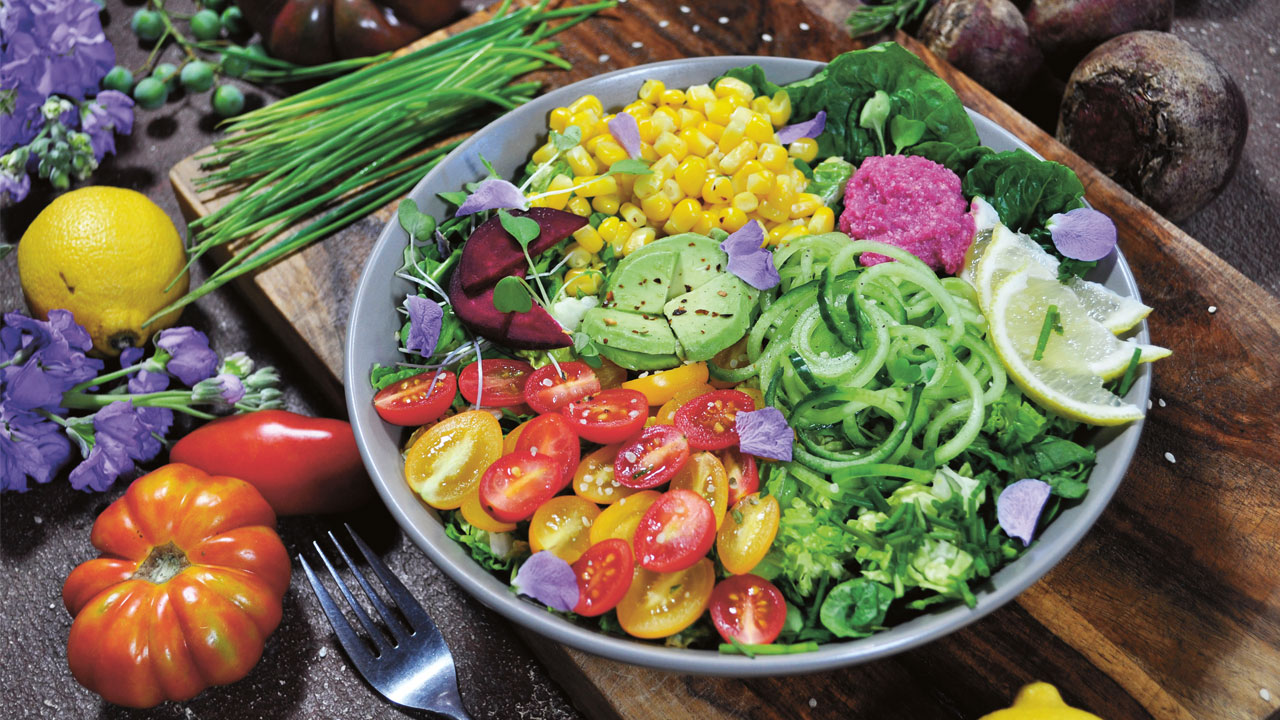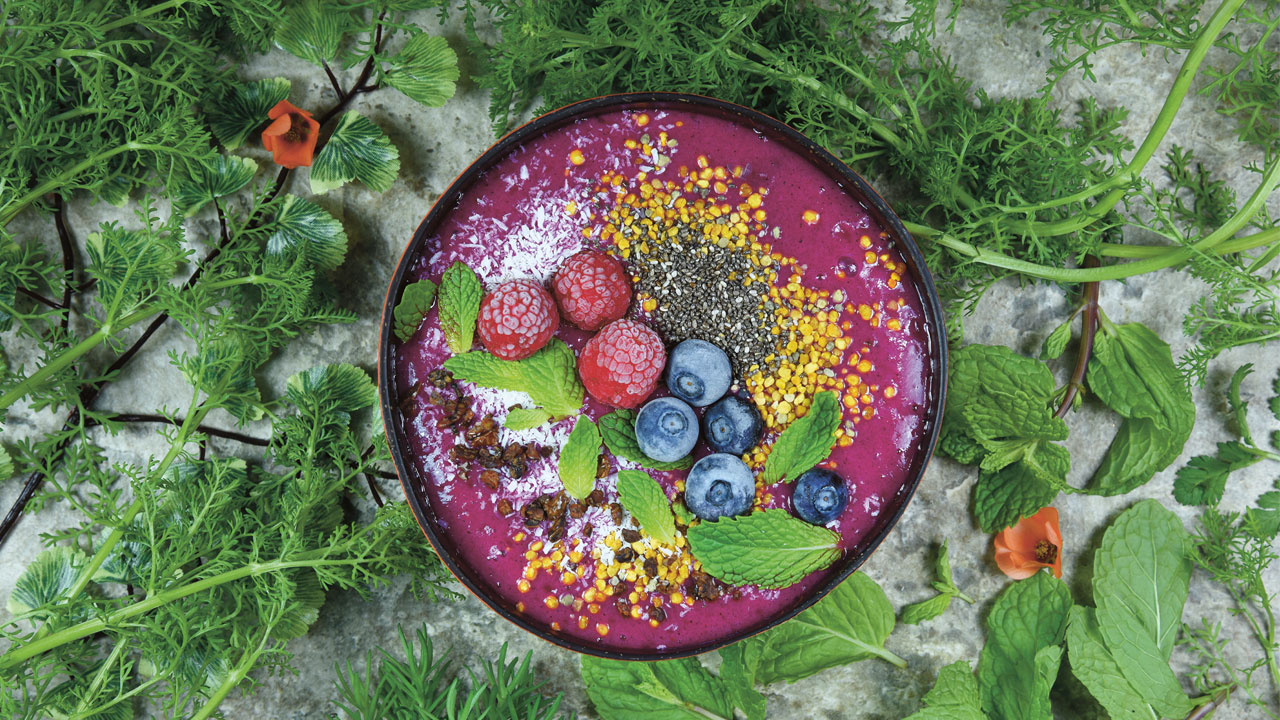
9 steps to conscious eating
Improve your relationship with food with these simple conscious eating tips. By Jose Calarco and Ana Forrest
Ana Forrest, famed yoga teacher and the creatrix of Forrest Yoga, has had an ever-evolving relationship with food and nutrition. She explains that it stemmed from when she was young and didn’t know how to feed herself.
“When I moved into a yoga centre that provided healthy, fresh, vegetarian meals twice a day, I felt very lucky. However, I was then horrified to find that the longer I ate the food, the sicker I got. Years later, I took an allergy test and discovered that I was allergic to many of the protein builders in the traditional vegetarian diet…all grains and beans. In an attempt to honour ahimsa (non-violence) I was yet again doing violence to myself. I was poisoning myself,” she remembers.
As a teacher of thousands of yogis worldwide, it was a challenge to promote conscious eating when she herself struggled to find a diet that worked with both her body and her beliefs.
It wasn’t until 2014 when she met Jose Calarco that the connection of what she needed nutritionally, and how she could also make a difference in the world came together.
Jose Calarco has been a vegan chef, animal activist and writer for 30 years. Since his addition to the Forrest Yoga team as co-director, musical shaman, and teacher, he has transformed Forrest Yoga’s events into musical, dynamic, and rich ventures into ceremonies complete with master musicians and elders from across the globe.
He has also provided meaningful lifestyle changes to the Forrest Yoga curriculum, including a profound invitation into a practice of veganism.
After a lifetime of research on nutrition, the meat and dairy industries, our planet’s health, and connection to the body, he has simplified the confusion around food into nine conscious steps.
1. Eat organic
Always eat organic if you can. Organic food has 83% more nutrients and contains no chemicals.
2. Eat local
Eating fresh local produce is far superior than eating cheap imported foods which are already weeks old and have lost their vitality before getting onto supermarket shelves.
3. Eat raw
Cooking food leeches out most of the nutrients. If you have to cook, steaming, baking and light grilling is far superior to frying. Work towards a 70/30 ratio of raw food versus cooked food.
4. Go vegan
Nothing will benefit the planet, the animals and your personal health more than adopting a plant-based diet.
5. No garlic and onion
Stink foods have absolutely no place in our diets and are highly detrimental to our spiritual, mental, emotional and physical wellbeing. These foods cause foul breath, body odour, heartburn and acid reflux. Cleanliness is next to godliness: being clean on both the outside and the inside is a step to spiritual purity and integrity.
6. Don’t overeat (& drink lots of water!)
Overeating is a modern day epidemic for both vegans and meat eaters alike. Always leave some space in your belly after each meal. One of the most important steps to good health is to never eat until you are full. Your food becomes your poison when you overindulge.
7. Eat with the circadian rhythms
From 4am to 12 noon is the cycle of elimination (so think fruit and liquids only).
From 12pm to 8pm is the cycle of appropriation (this is the most efficient time for digesting and eating larger quantities of food).
From 8pm to 4am is the cycle of assimilation (Eat nothing if possible. This is the time nutrients are absorbed via the organs).
8. Listen to your body
After each meal, tune in to your body to see if certain foods are not digesting well and making you feel bloated or ill….then you can leave them out of your diet. Watch out for food allergies: your body will give you signs as to what it does and does not want.
9. Bless your food with love and gratitude
Eat with the feeling of receiving life. See your relationship to food as an interface with nature. Pray over every meal and eat mindfully.
For more information and to study with Ana and Jose around the world, visit: forrestyoga.com



